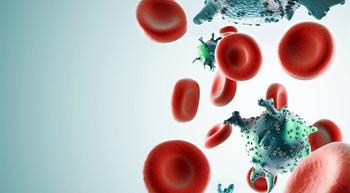
FDA Approves Piqray to Treat Breast Cancer
The Food and Drug Administration has approved the PI3K inhibitor Piqray (alpelisib) for the treatment of postmenopausal women, and men, with HR-positive, HER2-negative, PIK3CA-mutated, advanced or metastatic breast cancer following progression on or after an endocrine-based regimen.
The Food and Drug Administration (FDA) has approved the PI3K inhibitor Piqray (alpelisib) for the treatment of postmenopausal women, and men, with HR-positive, HER2-negative, PIK3CA-mutated, advanced or metastatic
The approval is based on data from the phase 3 SOLAR-1 trial. Among a subset of patients in the trial with PIK3CA mutations, the median progression-free survival (time from treatment to disease worsening) by local assessment was 11.0 months for those who received the Piqray combination compared with 5.7 months for those who received placebo plus Faslodex (fulvestrant). Those results, assessed after a median follow-up of 20 months, translated into a 35% reduction in the risk of progression or death, with a hazard ratio of 0.65 in favor of Piqray. There was no advantage to Piqray on median progression-free survival in patients without a PIK3CA mutation.
"Piqray is the first PI3K inhibitor to demonstrate a clinically meaningful benefit in treating patients with this type of breast cancer. The ability to target treatment to a patient's specific genetic mutation or biomarker is becoming increasingly common in cancer treatment, and companion diagnostic tests assist oncologists in selecting patients who may benefit from these targeted treatments," Dr. Richard Pazdur, director of the FDA's Oncology Center of Excellence and acting director of the Office of Hematology and Oncology Products in the FDA's Center for Drug Evaluation and Research, said in a press release.
"For this approval, we employed some of our newer regulatory tools to streamline reviews without compromising the quality of our assessment. This drug is the first novel drug approved under the Real-Time Oncology Review pilot program. We also used the updated Assessment Aid, a multidisciplinary review template that helps focus our written review on critical thinking and consistency and reduces time spent on administrative tasks," added Pazdur.
In SOLAR-1, 572 postmenopausal women or men with HR-positive, HER2-negative advanced breast cancer were randomized to oral alpelisib (300 mg/day) or placebo plus intramuscular fulvestrant (500 mg every 28 days and on days 1 and 15 of treatment cycle 1). A total of 341 patients had PIK3CA mutations when tumor tissue was tested, with 169 receiving the alpelisib combination and 172 taking fulvestrant alone.
About half of the patients in each arm had lung or liver metastases and approximately 6% had received prior CDK4/6 therapy.
When progression-free survival was assessed by a blinded independent review committee, the median progression-free survival was 11.1 months in the Piqray arm versus 3.7 months in the placebo arm, for a 7.4-month improvement with the addition of Piqray to Faslodex.
Progression-free survival was analyzed in the nonmutant cohort as a proof of concept. No clinically relevant effect was observed in patients with PIK3CA-nonmutant tumors, with a median progression-free survival of 7.4 months and 5.6 months in the Piqray and placebo arms, respectively.
The overall response rate in the PIK3CA-mutant cohort was 26.6% in the Piqray/Faslodex arm compared with 12.8% in the placebo/Faslodex arm. In the PIK3CA-mutant patients with measurable disease, the overall response rates were 35.7% and 16.2%, respectively.
For the entire study population, the rate of grade 3 or higher side effects was 64.4% in the Piqray/Faslodex arm compared with 30.3% in the placebo/Faslodex arm. Grade 3 or higher hyperglycemia occurred in 32.7% of patients receiving Piqray versus 0.3% receiving placebo.
Grade 3 rash developed in 9.9% of patients randomized to Piqray and 0.3% randomized to placebo. The discontinuation rate of Piqray/Faslodex due to side effects was 5% versus 1% for Faslodex alone.
This article originally appeared on




